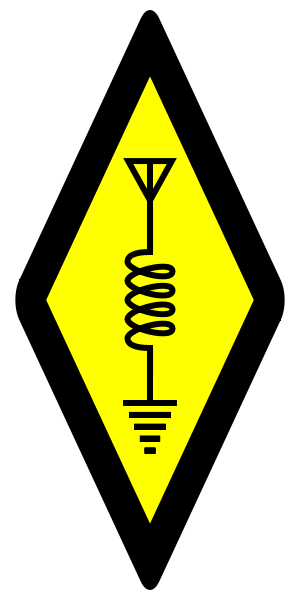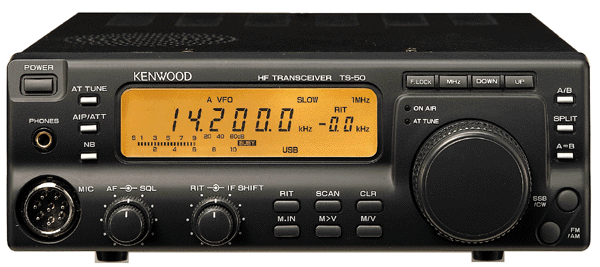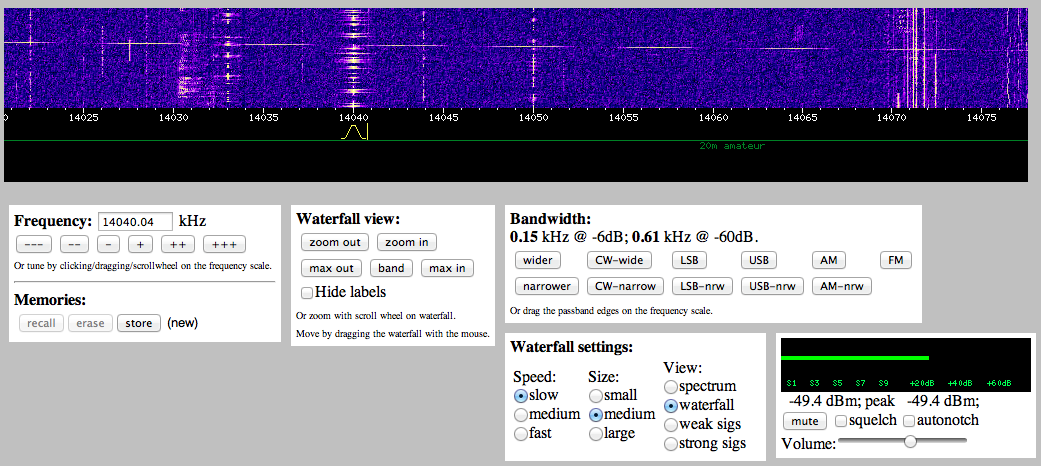Morse Code is not dead (yet)
 Not everybody understands why I am trying to learn morse code on lcwo.net. Maybe I'm not even sure myself. But most people seem to think morse code is absolutely dead. I could tell you that's not the case, but it is far better to find out for yourself. To be able to do that you need access to a radio which can receive CW (continuous wave) signals somewhere between 8MHz and 15MHz. This is the place where HAM Radio Operators hang out and try to talk to eachother. Morse code is still used there, mainly for DX-ing.
Not everybody understands why I am trying to learn morse code on lcwo.net. Maybe I'm not even sure myself. But most people seem to think morse code is absolutely dead. I could tell you that's not the case, but it is far better to find out for yourself. To be able to do that you need access to a radio which can receive CW (continuous wave) signals somewhere between 8MHz and 15MHz. This is the place where HAM Radio Operators hang out and try to talk to eachother. Morse code is still used there, mainly for DX-ing.
So how do you do that? With the power of the internet and a few very enthusiastic people in Dwingeloo, you can now receive radio signals right on your computer using radios all over the world. Lots of links in this article, have fun!
My father is a HAM radio operator . When I was around 16, he had a CEPT Class II license _(I searched the [www.cept.org](www.cept.org) site but for the life of me I can't find an exact description of the license and its entitlements)_. Because a lot of the theory required to get that license was already covered by my study at that time, I decided to get the same class license as my dad. This allowed me to operate on Amateur Radio bands from 50MHz and up.To be able to operate on lower bands, we had to pass a morse code exam, both sending and receiving. Together with my dad we started listening to 12 words per minute morse courses on tape, and I even joined some on-the-air courses.
At that time, there was some talk on removing morse from the exams because it was an "artificial barrier" and a skill which was not really required to operate radio equipment. So on the 1st of September in 2003, the morse requirement was dropped, which immediately meant that my license now covered the HF bands, and I did not have to pass the morse exam. I never looked at morse again. I also never worked on the lower HF bands, stayed mainly on 144MHz and up. My interests gradually changed and for the last 12 years or so, I didn't even look at HAM radio at all. Until I came across this video:
[youtube=http://www.youtube.com/watch?v=i8Ed0TSp0gs]
It made me smile. Morse Code and CW are not dead. I thought it would be fun to see if I could still do that. Well, I couldn't, not even at a much, much lower speed. Which lead me to lcwo.net and here I am, learning morse code again for no other reason than "because I can". For now I think my goal is to make at least 1 short conversation (called QSO by HAMs) , with a straight key, to another amateur. If not only just so I can say I did that.
 I thought I'd do everything low profile, low power (called QRP by HAMs), with a small second hand cheap transceiver like the Youkits HB1B. But my very supportive dad immediately lent me his Kenwood TS-50, so I could listen to morse on the bands. According to "general wisdom" this is not smart because you should not learn from sloppy coders or incorrect speeds. But hey, this is just a hobby. My brother heard I got the TS-50 and dug up his 25 Amps power supply so I could put a full 100 Watts on the antenna, and he also had a 32 meter dipole antenna for me to use. I can't use that antenna in my apartment building because of practical reasons but that's for another blogpost I think, "How to create a dipole antenna".
I thought I'd do everything low profile, low power (called QRP by HAMs), with a small second hand cheap transceiver like the Youkits HB1B. But my very supportive dad immediately lent me his Kenwood TS-50, so I could listen to morse on the bands. According to "general wisdom" this is not smart because you should not learn from sloppy coders or incorrect speeds. But hey, this is just a hobby. My brother heard I got the TS-50 and dug up his 25 Amps power supply so I could put a full 100 Watts on the antenna, and he also had a 32 meter dipole antenna for me to use. I can't use that antenna in my apartment building because of practical reasons but that's for another blogpost I think, "How to create a dipole antenna".
A few days later, my brother mailed me an awesome link to a site where anybody could listen to these bands, even without a receiver. In 2007, the Radio Club at the University of Twente found a way to make the receiver of the 25m radio telescope available to many people online, while giving every individual user the power to choose a different frequency to listen to. The original goal was to listen to EME signals, which are sent from earth to the moon, bounce back from the moon's surface and received by the telescope. But the technology of having multiple people use the same receiver over the internet led to something awesome.
All the schematics and software were made publicly available and today quite a few people have built receivers with it connected to normal dipole antennas, tuned to the Amateur Radio bands. So if you want to listen to Amateur Radio, or check how much morse is still out there, or even listen to your own signal as it is received by a receiver far, far away, go to http://www.websdr.org/ and check for yourself. Scroll down for a Google Earth map with all the receivers on there. You do need to have Java enabled for the receivers to work.
In the image below you can see me tuned in on 14.040MHz, on a morse code signal. I usually hear a lot of morse code between 14.000MHz and 14.100MHz. Based on the timing of the dit's and dah's, a lot of people are even still using "straight keys" so I think I can safely connect my old Junker to the TS50 and get this show on the road.
Have fun playing with your new receivers, kids. See you on air.
